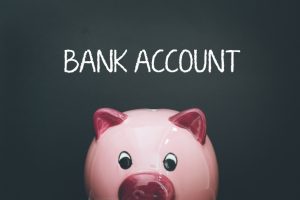Managing your personal finances is essential in today’s fast-paced world. One of the smartest ways to take control is by using financial apps that offer budgeting tools and real-time expense tracking. These apps give you a clear picture of your spending habits, helping you make more informed decisions.
With accurate expense tracking, you can easily identify where your money is going. This insight is often the first and most crucial step toward better financial health. Choosing the right financial apps empowers you to control your spending, stick to a budget, and steadily improve your money management habits.
Key Takeaways
- Utilize budgeting apps to track your expenses effectively.
- Gain insights into your spending habits to make informed financial decisions.
- Leverage expense tracking features for better financial awareness.
- Take control of your spending with the right financial tools.
- Achieve better financial health by managing your expenses.
The Digital Revolution in Personal Finance Management

The digital revolution has completely transformed how we manage our money. Gone are the days of relying solely on outdated, manual methods. Today, financial apps offer powerful tools to track expenses, set savings goals, and even manage investments—all from your phone or computer.
Why Paper-Based Tracking No Longer Works
Traditional paper tracking methods are often time-consuming and prone to human error. They require constant manual updates and can’t offer real-time insights. In contrast, digital financial apps streamline the process, improving accuracy and saving valuable time. These tools help you track your spending, categorize expenses automatically, and receive updates on your financial status instantly.
| Features | Paper-Based Tracking | Digital Tracking via Financial Apps |
|---|---|---|
| Accuracy | Prone to human error | Automated, highly accurate |
| Time Efficiency | Time-consuming manual entry | Quick, automated tracking |
| Real-Time Updates | No real-time updates | Provides real-time financial updates |
How Technology Transforms Your Financial Awareness
Financial apps don’t just record what you spend—they provide insight. With built-in analytics, you can understand spending patterns, identify saving opportunities, and set personalized financial goals. These tools make it easier to plan, stick to a budget, and stay accountable.
Ultimately, adopting financial apps puts you in control. The shift to digital finance isn’t just about ditching paper—it’s about empowering you to make smarter financial decisions and move confidently toward your goals.
Why Financial Apps Are Essential for Modern Budgeting
In today’s digital world, trying to budget without the help of financial apps can leave you at a serious disadvantage. These tools have transformed the way we manage money, providing real-time insights and automation that paper budgets simply can’t match. They help you understand your spending, track your habits, and make more informed financial decisions.
Instant Visibility Into Your Spending Habits
One of the biggest advantages of financial apps is the ability to see your spending habits instantly. They automatically track your transactions, giving you a real-time snapshot of your financial activity. This immediate feedback helps you pinpoint where your money is going and identify areas where you can cut unnecessary expenses.
Smart Categorization That Saves You Time
Another key feature is smart categorization. These apps automatically sort your expenses into categories like groceries, transport, or dining out. This not only saves time, but also provides clear, organized insights into your spending patterns. With this information, you can create more precise budgets and adjust your spending as needed.
Visualizing Your Progress Toward Financial Goals
Beyond budgeting, financial apps help you stay on track with your goals. Whether you’re saving for a big purchase or paying off debt, the visual tools—like charts and progress bars—make it easy to monitor your progress. These visual cues provide ongoing motivation and help keep your finances aligned with your goals.
In short, financial apps are no longer optional—they’re essential for effective, modern budgeting. They give you immediate clarity, simplify financial tracking, and help you move steadily toward financial stability.
Popular Financial Apps Around the World

Today, users across the globe have access to a variety of financial apps designed to help them track and manage money efficiently. Whether you’re budgeting, tracking expenses, or building investments, there’s a suitable app for every need. These solutions range from banking apps with built-in tools to independent finance platforms offering advanced analytics.
Banking Apps with Expense Tracking
Many banks worldwide provide mobile banking apps that include expense tracking, account management, and secure payment features.
Major Bank App A
This app offers real-time updates, automatic expense categorization, and tools to set monthly budgets—ideal for tracking day-to-day spending.
Major Bank App B
Combining bill payment, transaction monitoring, and investment summaries, this app gives users a complete financial overview in one place.
International Expense Trackers
Independent financial apps that link with multiple banks often provide clearer insights and personalized budgeting advice.
Mint
A well-known global app that automatically categorizes transactions, offers budgeting tips, and aggregates financial accounts from many institutions.
YNAB (You Need A Budget)
This app emphasizes proactive budgeting by helping users “give every dollar a job.” It supports syncing with multiple banks and encourages mindful spending.
Advanced Money Management and Investment Tools
For those seeking deeper financial insights, numerous apps combine budgeting, investment tracking, and planning features into a unified platform.
| App Name | Key Features | Ideal For |
|---|---|---|
| Bank App A | Real-time balances, spending summaries | Everyday banking and budgeting |
| Mint | Expense tracking, budget advice | Comprehensive expense management |
| YNAB | Goal-focused budgeting | Proactive budget planners |
No matter where you live, there’s a financial app that fits your lifestyle. These tools empower you to manage money more effectively, helping you stay in control and achieve your financial goals.
With the wide range of financial apps available in 2025, choosing the right one for your lifestyle is crucial for effective money management. The initial step is to clearly define your financial goals and select an app that aligns with them. Whether your aim is to budget more efficiently, save for a major purchase, or reduce debt, the right financial app can equip you with the tools and insights necessary to stay on track and make informed decisions.
Matching Apps to Your Specific Financial Goals
Begin by identifying your primary financial objectives. Are you aiming to build up your savings, eliminate outstanding debts, or simply gain a clearer picture of your daily spending habits? Each financial app caters to different needs, so aligning your choice with your goals is key.
- If saving money is your main focus, prioritize apps that offer automated savings features, goal-setting tools, and recurring transfer options.
- For those looking to reduce debt, choose apps that enable detailed tracking of debt payments, offer payoff progress visualization, and provide debt management strategies.
- If expense tracking is your priority, seek out apps that allow for detailed categorization, customizable alerts for unusual activity, and seamless integration with your bank and credit card accounts.
Real-time synchronization with your financial institutions ensures that you always have an up-to-date picture of your finances, helping you avoid overdrafts, track spending habits, and stick to your budget.
Must-Have Features for Effective Expense Tracking

A reliable financial app must excel at tracking expenses accurately. Look for the following essential features:
- Real-time transaction updates: Stay informed as soon as money leaves or enters your account.
- Spending categorization: Clearly organized categories make it easier to identify where your money goes.
- Alerts and notifications: Set up alerts for unusual transactions or when spending exceeds your predefined limits.
- Monthly summaries: Get a comprehensive view of your income and expenses each month.
Many top-rated financial apps in 2025 go beyond basic tracking by including budget planning tools, goal-setting modules, and data visualizations like graphs and spending trends. These features help you analyze your financial behavior, adjust strategies when needed, and remain motivated to reach your targets.
Ensuring Compatibility with Local Financial Systems
For users in regions with specific banking infrastructures, such as those in Northern and Eastern Europe, it is vital to ensure that your financial app is compatible with local institutions. Most leading financial apps in 2025 now support integration with regional banks and adhere to strict data protection laws, including GDPR and other local regulations.
Verify whether the app supports:
- Direct linking with your national banks
- Local language support
- Compliance with local data security requirements
Compatibility with local systems ensures that you can use all the features without restrictions, enjoy seamless updates, and benefit from accurate, real-time financial insights.
Step-by-Step Setup Guide for Your Financial Apps
Begin your financial journey with a smooth setup process. Here are the essential steps to get started with your financial apps:
Creating Your Account and Secure Login
The first step is to create an account within your chosen financial app. This typically involves providing basic personal information and setting up login credentials. Ensure your account is protected by enabling two-factor authentication (2FA), which adds a layer of security beyond your password. Using a strong, unique password is crucial to keep your financial data safe.
Connecting to Your Bank Accounts
To effectively track your spending and income, connect your local bank accounts to the app. In many countries, including those with advanced digital banking infrastructure, this process is quick and secure thanks to APIs and encrypted authentication systems. You’ll simply need to authorize the connection through your bank’s portal.
Personalizing Categories to Match Your Spending
Once your accounts are connected, customize the app’s default expense categories to reflect your unique spending habits. Proper categorization helps you better understand where your money is going and can highlight opportunities to adjust your financial behavior.
Setting Up Your First Budget
Budgeting is a core function of most financial apps. Start by dividing your monthly income into key spending categories such as housing, food, transportation, savings, and entertainment. Many apps offer automated suggestions and templates based on your income and past transactions, making the process more intuitive.
Here’s a summary of the setup steps and their benefits:
| Step | Description | Benefits |
|---|---|---|
| 1. Account Creation | Sign up with basic information | Secure and personalized experience |
| 2. Bank Account Connection | Link your national bank accounts | Accurate tracking of your finances |
| 3. Category Personalization | Customize categories for your spending | Better understanding of your expenses |
| 4. Budget Setup | Allocate income to specific categories | Effective money management |
By following these simple steps, you lay a solid foundation for long-term financial health. A properly configured financial app becomes a powerful tool in your journey toward smarter money management.
Daily and Weekly Routines for Successful Money Tracking
Incorporating daily and weekly routines into your financial habits significantly enhances awareness and control over your budget. Consistency is key to making the most of your financial apps.
Morning Check-ins: Starting Your Day Financially Aware
Begin each day with a quick financial check-in. Open your app to review your current account balances and scan any overnight transactions. This helps you stay alert to any unusual activity and reinforces mindfulness about your daily spending decisions.
Weekend Reviews: Understanding Your Weekly Patterns
Set aside time each weekend to review the week’s financial activity. Sort your expenses by category to see where your money went, identify any unnecessary spending, and adjust your budget if needed. Weekly reviews help reinforce positive habits and keep you aligned with your goals.
Monthly Analysis: Spotting Trends and Opportunities

At the end of each month, conduct a thorough review of your financial data. Look for trends in your income and expenditures, identify recurring costs you can reduce, and evaluate your progress toward your financial objectives. This monthly reflection is essential for making informed and strategic adjustments.
By integrating these routines into your schedule, you’ll gain greater clarity and confidence in managing your money. Regular engagement with your financial apps ensures you remain proactive and in control of your financial future.
Unlocking Advanced Features of Financial Apps to Boost Savings
To maximize your savings potential, it’s essential to explore and utilize the advanced features available in many modern financial apps. These tools automate key tasks, help you avoid unnecessary fees, and keep your financial goals top of mind.
Automated Savings Rules That Work While You Sleep
One of the most effective tools is automated savings. Financial apps allow you to set rules that transfer small amounts to your savings or investment accounts based on custom triggers. For example, you might save $5 each time you spend over $50 or set recurring transfers daily, weekly, or monthly.
Benefits of Automated Savings:
- Consistency: Builds savings steadily through regular transfers.
- Effortless Saving: Reduces the need for manual effort.
- Flexibility: Rules can be tailored to your income and spending behavior.
Smart Bill Management to Avoid Late Fees
Many financial apps now include smart bill management features. These send alerts when a bill is due and can even facilitate direct payments through the app.
| Feature | Benefit |
| Bill Reminders | Avoid late fees and penalties |
| Direct Payment | Streamline the bill-paying process |
| Payment Tracking | Maintain records of all payments |
These tools not only help you stay on top of your obligations but also contribute to a more stress-free financial routine.
Goal Tracking and Future Projections
Advanced goal-tracking features allow you to define specific financial objectives, such as saving for a vacation or building an emergency fund. The app monitors your progress and provides visual projections to show if you’re on track.
By visualizing your progress, these features motivate continued engagement and strategic adjustments, making your goals more attainable.
Leveraging these advanced tools empowers you to manage your money more effectively and make smarter, more informed financial decisions.
Protecting Your Data When Using Financial Apps
As digital banking and financial apps become more integrated into daily life, safeguarding your personal and financial data is more important than ever. Understanding how to maintain privacy and security can help you use these tools confidently.
Understanding App Permissions and Data Sharing
Before using a financial app, review the permissions it requests. Ensure you understand what data the app accesses and why. Reputable apps should clearly explain their data usage policies and comply with international standards like GDPR and PSD2.
Be cautious with apps requesting excessive access to your device or data. If an app asks for permissions unrelated to its financial functions, consider it a red flag.
Creating Strong Authentication and Security Measures
Protect your accounts with robust security practices:
- Enable multi-factor authentication (MFA) to add a second layer of protection.
- Use complex, unique passwords for each account and change them regularly.
- Confirm that the app uses bank-level encryption to secure your data.
A combination of these measures can significantly reduce the risk of unauthorized access.
What to Do If You Suspect a Security Breach
If you believe your data has been compromised:
- Immediately change your passwords.
- Notify your bank or financial institution of the suspected breach.
- Review your account for unfamiliar transactions.
- Document the incident, including date, time, and what was affected.
Most financial apps provide alerts for suspicious activity. Enable these features to receive timely warnings and respond quickly if needed.
Conclusion: Transforming Your Financial Future Through Smart App Usage

The right financial apps can be transformative in how you manage your money. With access to real-time data, automated savings, budgeting tools, and strong security measures, managing your finances is more accessible than ever.
Smart usage of these apps is essential. Independent of where you live, there are solutions designed to fit your lifestyle and financial ambitions. Whether you’re monitoring daily expenses or working toward long-term goals, there’s an app that can support your journey.
This guide has outlined how a well-chosen app, combined with consistent habits and awareness, can significantly enhance your financial well-being. By putting these strategies into practice, you’re taking a meaningful step toward greater control, security, and stability in your financial life.
Now is the time to take action. Explore the financial apps mentioned, assess your needs, and begin your journey toward smarter, more confident money management today.









